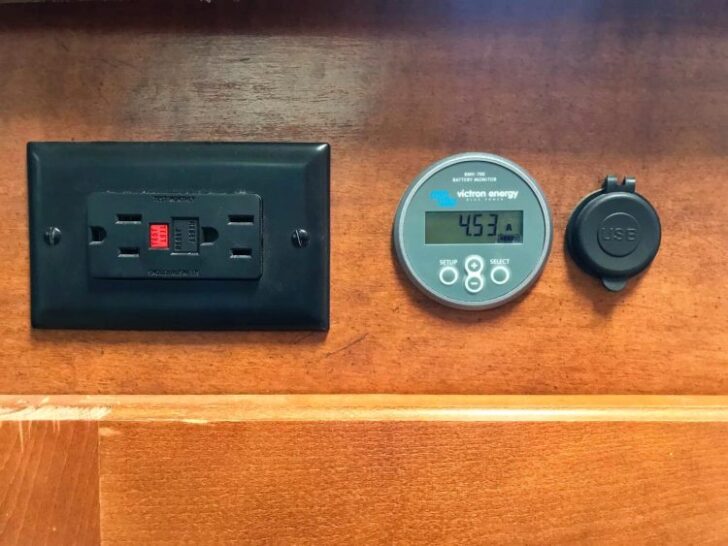
On the other hand, if you only take it down to a quarter, 25% discharge, that’s only a partial cycle and a quality Deep Cycle battery might could do that 1000-3600 times. It’s common for a quality Deep Cycle battery to be able to be deep cycled 500-1000 times.īut, if you are abusive to your batteries, and cycle them down below 50%, you are actually damaging them each time and reducing the number of deep cycles they have.

On the other hand, a quality Deep Cycle battery is designed to intentionally be discharged to half throughout their life and are purpose-built to be able to handle it. A starting battery is never supposed to be deep cycled and after 3-7 accidental deep cycles, it will be destroyed and need to be replaced. The difference between a starting battery and a true Deep Cycle battery is how many cycles they are designed to handle.
#CHANGING RV BATTERY MONITOR FULL#
If you take your battery down to 50%, or half of it’s capacity, you want to bring the battery back up to 100% full as soon as possible, preferably the next day! That’s considered one full deep cycle. Every time you draw power out of your battery it is being discharged somewhat and that is called cycling it. Monitoring your State of Charge is critically important to the long term health of your battery bank, because they want to be as close to full as they can be all the time. Many of us have a house battery in our van or RV that we are charging either off our engines alternator or starting battery, or you have installed solar panels which are charging our house battery. Hopefully you have a charge controller with a digital display that give you the volts of your battery or you have installed you own voltmeter to monitor your batteries State of Charge.

Just because your voltmeter tells you the battery is full, should you trust it?


 0 kommentar(er)
0 kommentar(er)
